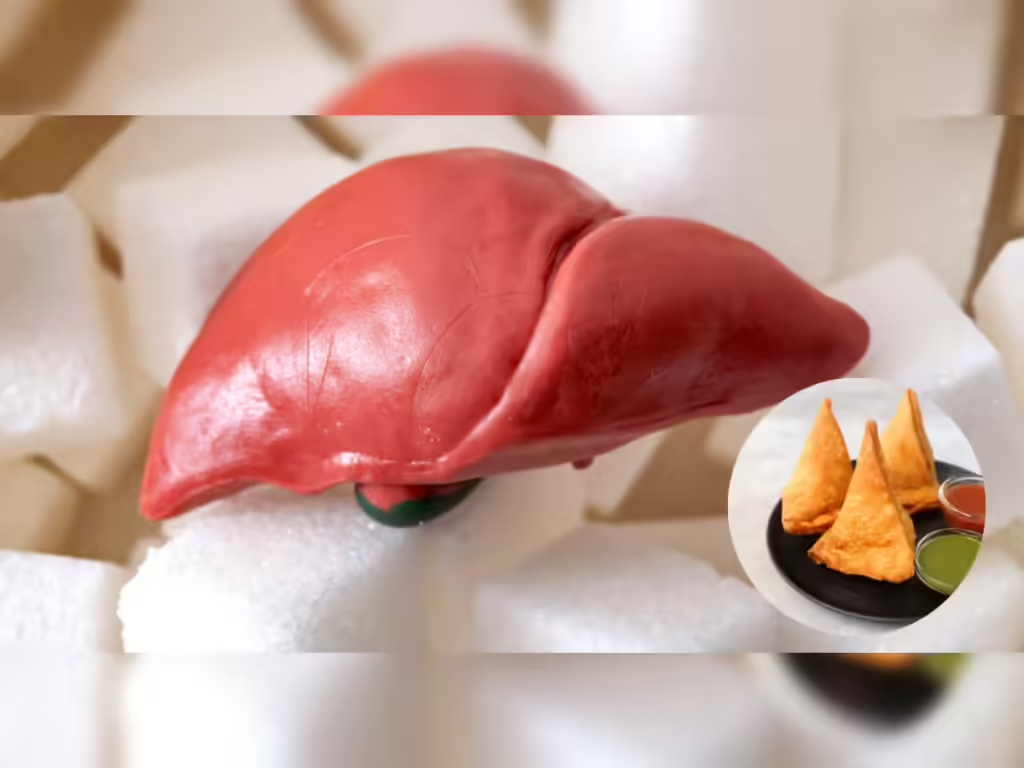When a 14-year-old student in Mumbai visited his doctor complaining of fatigue and occasional stomach pain, the diagnosis was unexpected: non-alcoholic fatty liver disease (NAFLD). The teen had no history of alcohol use, no significant weight gain, and no major illness. But like many of his peers, he consumed sweetened drinks daily, skipped physical activity, and relied heavily on processed snacks.
Across India, such cases are becoming increasingly common. Physicians are warning of a steep rise in fatty liver disease among teenagers, a condition long associated with adults and heavy alcohol consumption. Now, it’s appearing in classrooms, driven not by alcohol—but by sugar, junk food, and sedentary lifestyles.
“This is a quiet but serious epidemic,” said Dr. Anjali Mehta, hepatologist at AIIMS Delhi. “We’re diagnosing 13- and 15-year-olds with liver changes we used to see in adults in their forties.”
An Unseen Epidemic in the Making
Non-alcoholic fatty liver disease (NAFLD) occurs when fat builds up in the liver in people who consume little to no alcohol. In its early stages, the condition is reversible. But if left unmanaged, it can progress to non-alcoholic steatohepatitis (NASH), liver fibrosis, and even cirrhosis.
A 2023 Indian Council of Medical Research (ICMR) study found that nearly 1 in 5 urban adolescents in India shows signs of early fatty liver. Many of them are not visibly overweight but suffer from underlying metabolic issues, including insulin resistance and elevated cholesterol.
“This is not just about obesity,” explained Dr. Karthik Rao, a pediatric gastroenterologist in Bengaluru. “Even lean children can develop fatty liver due to poor diet and inactivity.”
Processed Food, Sugar, and Screen Time
The surge in adolescent fatty liver disease has coincided with an explosion in ultra-processed food consumption across India’s cities. Teenagers are consuming more refined carbohydrates, sugary beverages, packaged snacks, and fried foods—often replacing traditional home-cooked meals.
“Fructose-heavy soft drinks, sweetened juices, and packaged snacks are now part of everyday diets,” said Dr. Rao. “These drive fat accumulation in the liver, particularly when paired with physical inactivity.”
Digital habits are compounding the problem. With school assignments online, leisure time spent on streaming platforms, and reduced access to outdoor activities, many urban teens spend over 6 hours daily in front of screens.
The result is a generation at risk—not just of fatty liver disease, but of a cluster of conditions that fall under metabolic syndrome, including diabetes and cardiovascular disease.
Silent Progression, Delayed Detection
What makes the disease especially insidious is its asymptomatic nature in the early stages. Teenagers may feel normal, aside from occasional tiredness or digestive discomfort. Standard pediatric exams often miss early liver damage, which is typically detected only through imaging or blood tests.
“The liver doesn’t complain until the damage is significant,” said Dr. Mehta. “That’s why early screening and awareness are critical.”
In many cases, the diagnosis comes as a shock to parents who believed their children were eating well and appeared healthy.
Solutions Begin at the Dining Table
Unlike many chronic conditions, early-stage fatty liver can be reversed—but it requires prompt and sustained lifestyle changes. Experts recommend a balanced diet low in refined sugar and processed fats, regular exercise, and at least 8 hours of sleep.
There is no pharmaceutical cure for NAFLD in children. “The only proven treatment is behavior change,” Dr. Mehta noted. “But the window for reversal is limited.”
Some schools have started integrating nutrition education and fitness programs, but public health messaging remains minimal. Pediatricians are calling for national campaigns on junk food reduction, clear food labeling, and screen time regulation.
“Fatty liver in teenagers is the warning bell,” Dr. Rao said. “If we ignore it now, we’re setting up an entire generation for chronic disease in early adulthood.”


